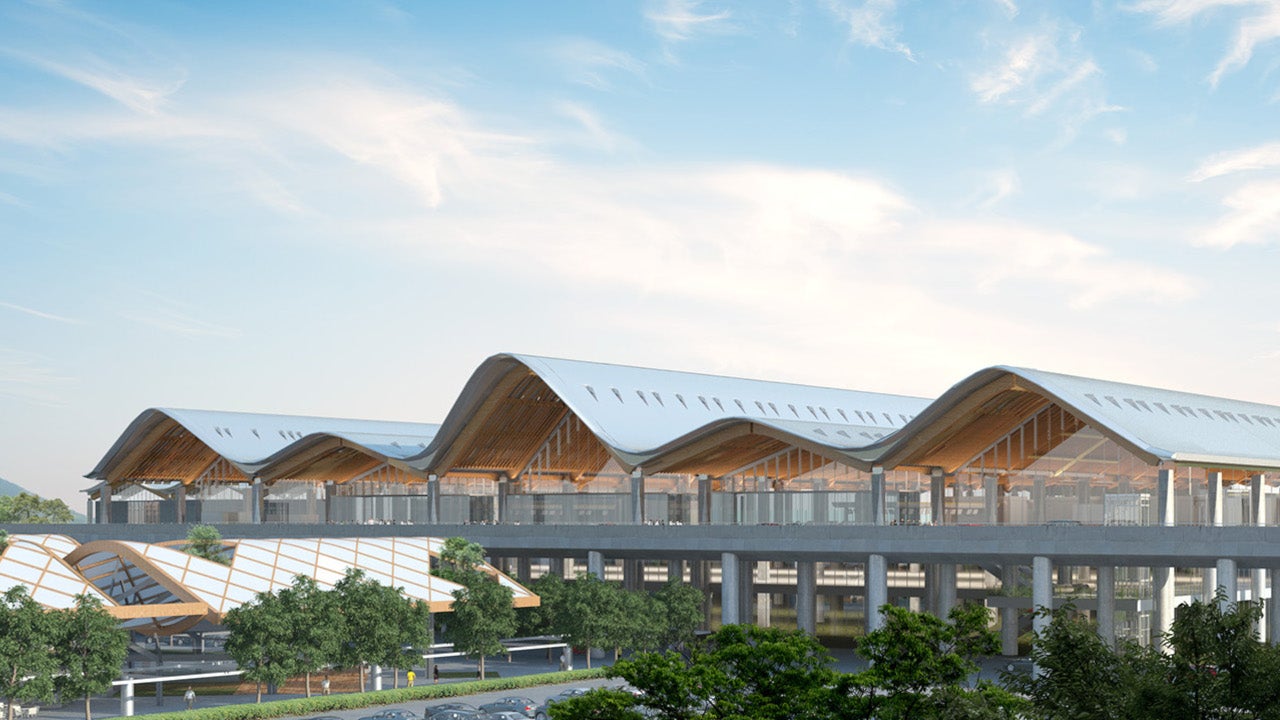Clark International Airport in the province of Pampanga, Philippines, is undergoing a major expansion, which involves the construction of a second passenger terminal building. The new terminal will increase air transport capacity for the Greater Capital Region.
The passenger terminal building is part of the Build, Build, Build (BBB) programme of the Philippines Government. Under the model, the infrastructure was built by the government using its own funds, while the operations and maintenance (O&M) will be handed over to the private sector.
The construction of the new passenger terminal building was completed in October 2020 and is scheduled to become operational in January 2021.
The total investment in the construction of new terminal is nearly PHP12.55bn ($243m). The project is expected to decongest the Ninoy Aquino International Airport serving Manila and its surrounding metropolitan area.
Clark International Airport currently serves 19 domestic and 14 international destinations, with 686 weekly flights by 18 airlines. It is located inside the Clark Freeport Zone’s Civil Aviation Complex.
Clark international airport new passenger terminal
Spread across 110,000m², the new terminal will have the capacity to accommodate eight million passengers annually, increasing the total airport capacity to 12.2 million. It features 18 passenger boarding bridges, 3,881 parking spaces and 20 bus parking spaces. An event space has been created within the building and is installed with lanterns and art installations. The terminal has a four-storey building comprising domestic and international remote gates, baggage reclaim halls, VIP, as well as meeters and greeters space in level one.
Level two includes arrivals corridors, transfers, immigrations and fixed link bridges. Level three is dedicated for departures and houses well-wishers area, forecourt, check-in, security checks, retail space and gate lounges.
The fourth level (mezzanine) features food and beverage area and commercially important person (CIP) lounges.
The terminal offers views of the Sacobia mountain ranges towards its west and Mt. Arayat towards its east. It is connected to the Manila-Clark Railway Station, with the travel time between Metro Manila and the airport now cut to less than 60 minutes.
The design of the terminal’s façade reflects the wavy silhouette of Mount Arayat, Mount Pinatubo and Sierra Madre mountain range. The tallest arch is 20m high and the structure is flanged with 12m and 16m high arches. The remaining arches are 12m tall.
Other developments at Clark international airport
The Clark International Airport Corporation (CIAC), which is a government-owned firm responsible for the development, operation, and management of the Clark Civil Aviation Complex, announced its plans to construct a new airport control tower at the airport in September 2020. At 54m tall, the air traffic control tower will be the tallest in the country and will be developed with an investment of PHP375m ($7.59m). Other projects include modernisation of the airfield ground lighting system, and the installation of a new radar system. A detailed engineering design of the second runway will also be carried out. The new projects are part of the international airport’s master plan.
The 2,367ha civil aviation complex will feature aerotropolis with both airside and landside areas. It will be used for commercial purposes.
Contractors involved
The Department of Transportation (DOTr) and the Bases Conversion and Development Authority (BCDA) awarded the engineering, procurement and construction (EPC) contract to Megawide-GMR consortium for the construction of passenger terminal building in December 2017.
Luzon International Premier Airport Development (LIPAD) Corporation appointed Populous as the lead interior designer and retail planner for the second terminal building in October 2020. Populous teamed up with Casas+Architects for the project.
Meinhardt won a contract to conduct the evaluation of civil and structural/mechanical, electrical and plumbing engineering services.
Budji Layug and Royal Pineda provided the architectural concept for the terminal two.
Concession agreement
A 25-year concession agreement was signed between BCDA and LIPAD for the long-term O&M concession in January 2019.
LIPAD, formerly known as the North Luzon Airport Consortium, was officially awarded the O&M contract in August 2019. It comprises Changi Airports Philippines, Filinvest Development, JG Summit and Philippine Airport Ground Support Solutions.
The agreement grants LIPAD to develop the commercial assets, operate and maintain project facilities as well as improve the new passenger terminal.











